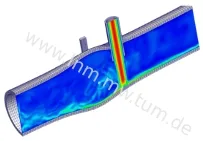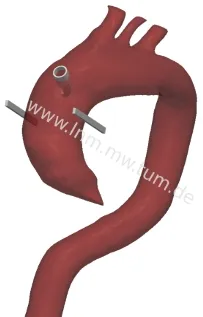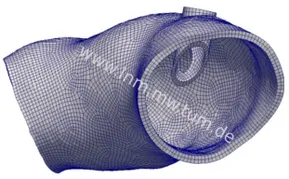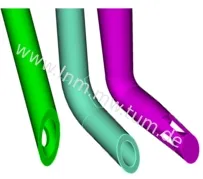Biomedical: Cross-Clamping and Cannular Flow
This research is done in collaboration with Prof. Dr. Ulrich Stock from the Eberhard-Karls-Universitätklinikum Tübingen.


There is a serious risk of strokes occurring during on-pump cardiopulmonary bypass (CPB) surgery, which is a major contributor to short- and long-term patient morbidity, mortality and associated costs. Despite refinement of this procedure, the accompanying equipment and taking necessary precautions in terms of patient-specificity, the number of reported incidents of stroke associated with cardiac surgery are still relatively high (2-13%, Kellerman and Jungwirth, 2010) of approximately 2 million of these surgeries performed annually (Franco and Verrier, Chpt 8, 2003).
The unphysiological condition of a patient's systemic circulation during CPB can lead to emboli formation, emboli release and also to hypoperfusion. Since these factors are the major causes of the perioperative and postoperative strokes, we are computationally investigating the procedures associated with increased emboli release and hypoperfusion.
Therefore, we are specifically interested in simulating aortic occlusion (cross-clamping or endoclamping) and flow from the aortic cannula (cannular flow). In the process of simulating these procedures, we are also interested in determining the required model complexity for delivering clinically relevant results, including, physiological prestressing of the aortic wall, fluid-structure-interaction, patient-specific geometries etc. Finally, this acquired knowledge will be used to aid in surgical planning.

